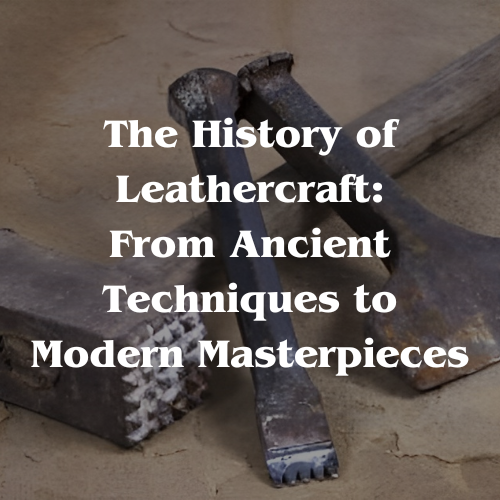Leathercraft is an art that spans centuries, weaving together tradition, skill, and innovation. From the early beginnings of humanity's relationship with animal hides to the sophisticated techniques employed by master artisans today, the history of leatherworking is a captivating journey. In this blog, we will explore the rich history of leathercraft, highlighting its evolution and how traditional craftsmanship continues to influence contemporary designs that inspired the exquisite creations of Béatrice Amblard from April in Paris.
Ancient Origins
The roots of leathercraft can be traced back to ancient civilizations, where early humans discovered that animal hides could be transformed into durable materials. Mesopotamians, Egyptians, and Greeks employed basic tanning techniques to preserve and soften hides, creating essential items such as footwear, bags, and armor. These early techniques laid the foundation for the future of leatherworking.

Medieval Mastery
Leathercraft flourished during the medieval period, as craftsmen honed their skills and developed more intricate techniques. Artisans in Europe perfected vegetable tanning, a process that utilized natural materials like tree barks to create supple and long-lasting leather. This era witnessed the rise of guilds and trade associations, further promoting the exchange of knowledge and the preservation of craftsmanship secrets.

Renaissance Revival
The Renaissance period marked a resurgence in leathercraft, with master artisans elevating the art to new heights. Intricate tooling and embossing techniques emerged, transforming leather into works of art. One of the hallmark techniques of Renaissance leatherworking is hand stitching. Skilled artisans meticulously sewed leather pieces together using durable waxed threads, resulting in superior strength and exquisite craftsmanship. Renaissance artisans had a deep understanding of various types of leather, each with its unique qualities. They worked with full-grain leather, known for its natural beauty and durability, as well as top-grain leather, which offers a balance between durability and softness. Additionally, the use of exotic leathers, such as ostrich or alligator, added an air of luxury to their creations. April in Paris draws inspiration from this era, embracing the essence of Renaissance craftsmanship in their modern creations.

Industrial Revolution and Modern Innovations
The Industrial Revolution brought significant changes to the leather industry. Mass production techniques emerged, making leather goods more accessible to a wider audience. However, as traditional craftsmanship faced challenges, artisans like those at April in Paris sought to preserve the artistry and quality associated with handmade leather goods.

To conclude, the history of leathercraft is a testament to the ingenuity and dedication of artisans across time. From ancient origins to modern masterpieces, traditional techniques continue to influence the creations of April in Paris. With a commitment to preserving the artistry and quality of handmade leather goods, they honor the legacy of leatherworking in every piece.

